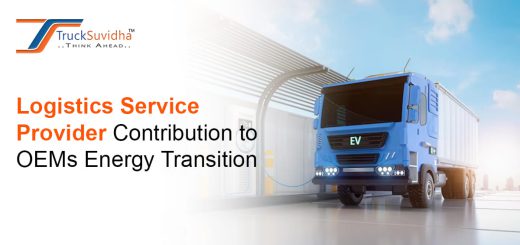Adopt IoT to Gain the First-Mover Advantage
One of the biggest technological disruptors is the Internet of Things. Many people still believe that IoT is in its infancy. However, it currently has 7 billion devices and is anticipated to reach 50 billion by 2025. They will have an impact on almost every industry since it is here to stay.
IoT is an acronym for “intelligent everything.” Everything in your immediate neighborhood, including those in your house, place of business, and city, has the potential to become a smart object and link to the current network of smart objects to exchange data and information.
This may involve a wide range of devices linked together by sensors, actuators, or software, such as autos, household appliances, street lighting, and several other items. There are several options.
Other businesses are adopting IoT early in logistics. The need for this arose from the fact that the most basic definition of logistics is the most effective means of moving goods to and from locations and people.
Due to the large number of connected things, manufacturing, and logistics are two industries where IoT might find wide-ranging adoption opportunities.
Imagine what type of harmony and synchronicity their users could tap into if all the elements of a logistics system were interconnected.
Leaving speculation aside, our focus is on how supply chain managers, logistics providers, and other professionals in this industry can embrace the Internet of Things to fully use its potential. The following supply chain and logistical domains are where IoT will surely be felt:
Four Ways Logistics Companies May Use IoT to Differentiate Themselves:
Warehousing
Warehouses are essential components of every supply chain. Any advancements and breakthroughs in warehousing have a multiplicative influence on the costs spent across the supply chain. Warehouses are searching for greater space utilization and inventory management.
They may optimize their spaces thanks to IoT. These machines can make inventory choices more quickly by equipping devices with sensors, such as forklifts.
Warehouse safety and security are also key considerations. These needs can be enhanced and increased using IoT. Warehouse managers will be able to operate warehouse doors remotely using IoT sensors. Also, any suspicious or odd behavior will be noticed instantly. Similarly, IoT would significantly minimize the likelihood of warehouse accidents. Workers at warehouses are always near heavy machinery and equipment. Accidents and injuries are quite likely. When IoT-connected machinery detects a flaw, it may quickly notify the user.
Transportation Management
When your transport management system is connected to your system and is completely or partially IoT-enabled, it will be converted into a fantastic tool.
The Internet of Things will improve the operational efficiency of your delivery, tracking, and other transportation-related aspects. This is good news because transportation is generally the most expensive component in a supply chain.
With growing connectivity between truck fleets, GPS technology, and ELDs (Electronic Logging Devices), fleet management systems will be able to easily monitor various metrics such as idle time, speed, ETA, and others. To ensure that the whole logistics system can be tracked and controlled as a single symphonic unit, IoT infrastructure should be able to link all available assets: products, containers, carriers, sensors, and people.
End-to-End Visibility
Even the greatest supply chain management software cannot give comprehensive end-to-end insight into a logistics network. Complete visibility is necessary to maximize supply chain efficiency and profitability. It supports timely operations and reduces delays through early problem detection.
By adding RFID (Radio Frequency Identification) technology into the supply chain, visibility would improve while inventory costs would be reduced. It may help to track the position and movement of every item within a store, warehouse, or in transportation.
RFID in combination with IoT infrastructure will improve asset intelligence by allowing access to real-time data across the whole supply chain.
Energy Administration
This one is sometimes overlooked, yet it may be more essential than everything else on this list. IoT-enabled sensors and monitoring systems may effortlessly turn off areas of a warehouse or factory that are not in use while automatically turning on those that are.
As warehouses grow in size to maximize space, manually monitoring their energy use becomes more difficult and time-consuming.
IoT-enabled heat and motion sensors would enable warehouse management systems to utilize their energy resources more intelligently and efficiently. Companies may gain brownie points in this age of greater sensitivity to the issue of energy conservation by implementing such proactive, forward-thinking digital measures to be mindful of their energy consumption.
Final Thoughts
Today, many sectors are trying to adapt to the internet and carry out the IoT revolution. This is because IoT is the future and early adopters will have a huge advantage over those who turn to the latter. Companies involved in logistics and supply chain management should consider investing in IoT infrastructure ahead of their competitors. Above all, IoT will simplify all of your logistical processes and improve your bottom line.




Recent Comments